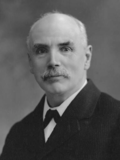| |||||||||||||||||||||||||||||||||||||||||
All 72 Scottish seats to the House of Commons | |||||||||||||||||||||||||||||||||||||||||
|---|---|---|---|---|---|---|---|---|---|---|---|---|---|---|---|---|---|---|---|---|---|---|---|---|---|---|---|---|---|---|---|---|---|---|---|---|---|---|---|---|---|
| |||||||||||||||||||||||||||||||||||||||||
 Results of the December 1910 election in Scotland for the county and burgh seats Liberal Conservative Liberal Unionist Labour | |||||||||||||||||||||||||||||||||||||||||
A general election was held in the United Kingdom over the period of 3-19 December 1910, [b] and members were returned for all 72 seats in Scotland. The election was held less than a year after the January general election in which the Liberals and the Irish Parliamentary Party gained a majority in the House of Commons. The Liberal government called the election in order to gain a mandate for the Parliament Act 1911, which would prevent the House of Lords from permanently blocking legislation linked to money bills ever again, and to obtain King George V's agreement to threaten to create sufficient Liberal peers to pass that act (in the event this did not prove necessary, as the Lords voted to curtail their own powers). [2] The election saw little change in the political make-up of Scotland, with no party registering a net change of more than a single seat.
Contents
- Results
- Seats summary
- Burgh & County constituencies
- University constituencies
- Votes summary
- Notes
- References
Scotland was allocated 72 seats in total, with 70 territorial seats, comprising 32 burgh constituencies and 37 county constituencies. [c] There were also two university constituencies, Glasgow and Aberdeen Universities and Edinburgh and St Andrews Universities. As voters in university constituencies voted in addition to their territorial vote, the results are compiled separately.
All of the three main party leaders had Scottish links: Liberal leader Asquith had represented East Fife since 1886; [3] Tory leader Arthur Balfour was born in East Lothian; [4] whilst Labour leader George Barnes was born in Dundee and also represented the seat of Glasgow Blackfriars and Hutchesontown. [3]


